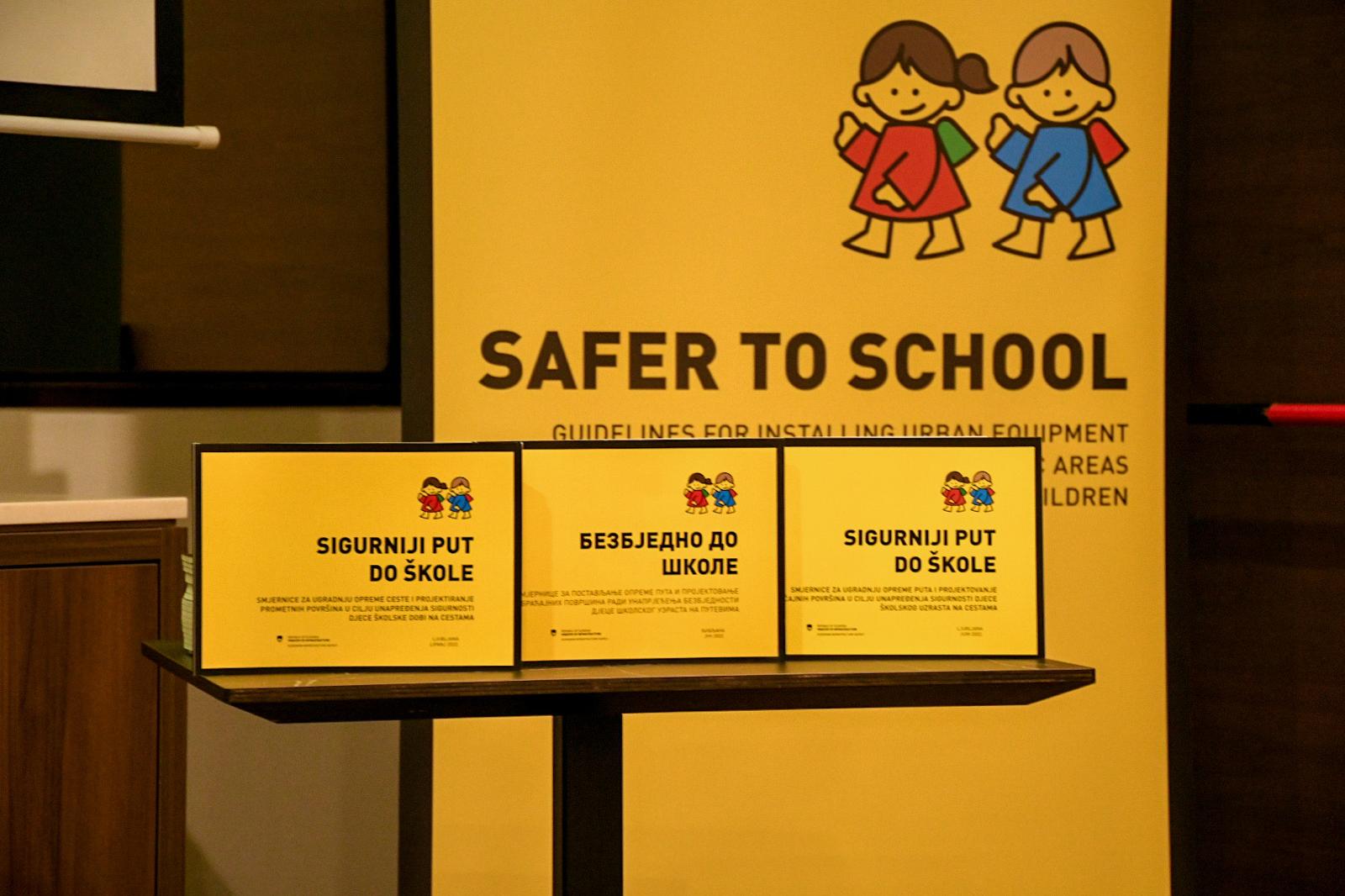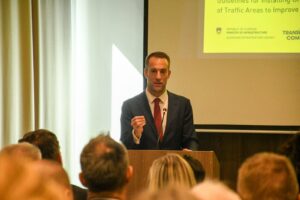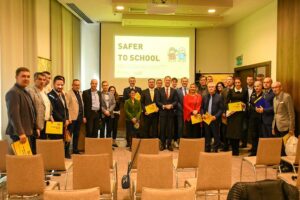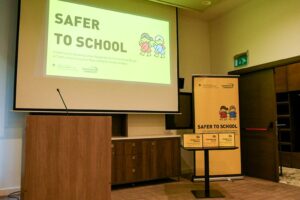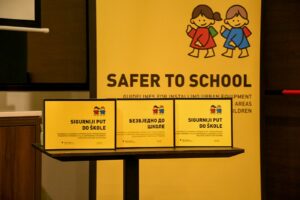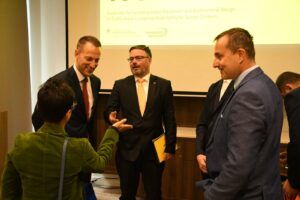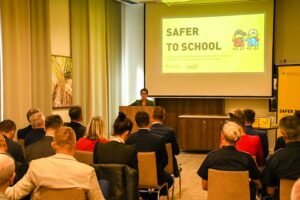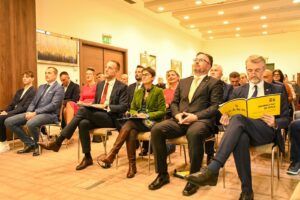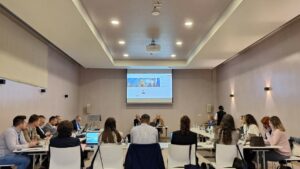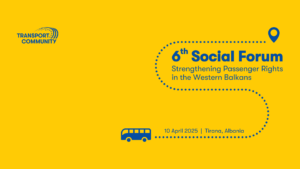SARAJEVO – The Transport Community Permanent Secretariat, in partnership with Slovenian authorities, organised an event in Sarajevo to promote the implementation of the Safer to School guidelines, emphasising the need for improved road safety around educational institutions. The event, held on Wednesday, 9 October, brought together representatives of Bosnia and Herzegovina’s authorities, Slovenian officials, and the Transport Community to address this issue.
The Safer to School guidelines provide practical measures designed to make school zones safer for children. Developed by the Slovenian Infrastructure Agency and already successfully implemented in Slovenia, these guidelines offer a model for improving road safety across the Western Balkans.
Mr Matej Zakonjšek, Director of the Permanent Secretariat of the Transport Community, said that every morning, as our children walk or cycle to school, we need to ensure that their path toward schools is safe. “They should have no fear of danger. Yet, the reality is different. Our school zones are not as safe as they should be,” he pointed out and underlined that the guidelines that were presented are a good example with positive results in practice.
H.E. Mr Damijan Sedar, Ambassador of Slovenia to Bosnia and Herzegovina, added: “It is known that children tend to be more vulnerable in the vicinity of schools upon their arrival or at the end of the school day when socialising or playing with their school mates. It is necessary to talk publicly about the traffic in the vicinity of the educational institutions. Implementation of the ‘Safer to School’ guidelines will, in this regard, definitely help improving traffic safety, both for the children and other participants in the traffic.”
Minister of Communications and Transport of Bosnia and Herzegovina, H.E. Mr Edin Forto, said that children, as the most vulnerable participants, often make mistakes and create complex situations in traffic. Therefore, the traffic system must take these mistakes into account and, with the help of technical means, strive to correct them. “The guidelines we are presenting today are a combination of the knowledge and experience of our friends from Slovenia, with our intention to apply them in school zones in Bosnia and Herzegovina,” he pointed out.
Bosnia and Herzegovina, like the rest of the Western Balkans, continues to struggle with high rates of traffic accidents. In 2023, the region recorded a concerning number of road fatalities, averaging 73 fatalities per million inhabitants – substantially higher than the EU average of 46 fatalities per million. The event underscored the urgency of addressing these statistics and working towards safer roads, especially around schools.
The Transport Community, alongside Slovenian partners, remains committed to supporting the Western Balkans in adapting and implementing these road safety guidelines. By leveraging best practices from the EU and tailoring them to local needs, the initiative aims to improve the safety of school zones across the region.
The Sarajevo event gathered representatives from the Ministry of Communications and Transport of Bosnia and Herzegovina, Ministry of Interior, Sarajevo Canton authorities, the Slovenian Embassy, European Union Delegation to Bosnia and Herzegovina, Slovenian Infrastructure Agency, and other stakeholders.
BACKGROUND
The Transport Community is an international organisation focusing on mobility and transport. It includes 36 participants: EU member states, the Western Balkans, and three observing participants (Georgia, Republic of Moldova, and Ukraine). The organisation aims to integrate the Western Balkans’ transport markets into the EU and supports the region in implementing EU transport legislation.
The Transport Community’s Action Plan for Road Safety seeks to significantly reduce road fatalities and injuries. Access the Action Plan here.
Additionally, the Western Balkans Road Safety Observatory (WBRSO) monitors road safety targets and works towards improved road safety data across the region. Access WBRSO here.

